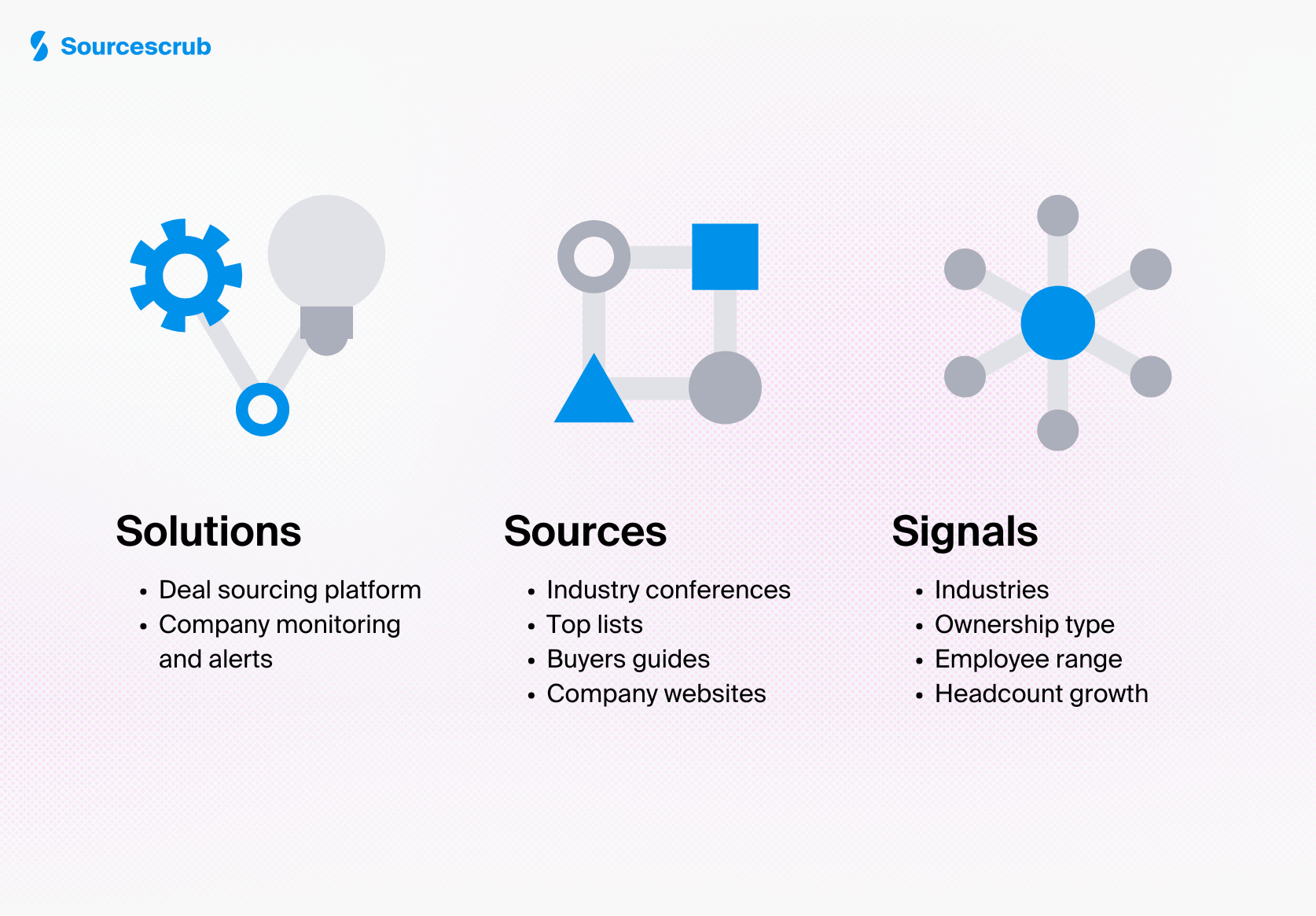
This series breaks down the combinations of sources, solutions, and data signals top dealmakers use to identify, engage, and win the right opportunities.
This post has everything you need to learn how to originate M&A deals in niche, high-growth sectors. Read on for a step-by-step breakdown of how to see all the possibilities within a particular sector, narrow your options down to the most promising targets, and keep tabs on new or key players that match your investment criteria.
As markets become progressively fragmented and companies place more value on domain expertise, firms’ sourcing strategies must grow increasingly specialized. Targeting specific sectors like healthcare used to be enough to give dealmakers a competitive edge. But today, even sub-sectors like orthopedics require firms to go a level deeper to orthobiologics or robotic surgical systems, for example.
While being super specialized makes it easier for dealmakers to differentiate themselves from the competition, thoroughly researching such niche industries and identifying the right opportunities within them is extremely time consuming and error prone without the right technology. This is especially true when looking for privately-owned or bootstrapped companies.
In addition, with technology advancing so rapidly and social media causing trends to spread faster and farther than ever before, niche markets are appearing, growing, and evolving at lightning speed. It’s critical for dealmakers to be able to not only get up to speed on key players and identify top targets quickly, but also stay on top of any new or up-and-coming players in real time.

For the purposes of this post, let’s imagine we’re a private equity firm looking to invest in niche companies that meet the following criteria:
Keep scrolling for a step-by-step breakdown of how top dealmakers can apply this formula using a deal sourcing platform like Sourcescrub.
In Sourcescrub or your deal sourcing platform of choice, start by searching for companies in your target sub-sector. For us, this means first looking for companies with variations of the word “pickleball” in their company profile. However, this returns a large number of sporting clubs and facilities, which are outside of our investment thesis.

Next, we filter the results by industry, including apparel & fashion, consumer goods, and sporting goods, to narrow our search.

To ensure we have captured as many companies in this niche as possible, we also search for several related keywords within companies’ websites.

Pro Tip
While mapping markets is outside the scope of this formula, the first step to pursuing any sector and identifying potential targets is understanding where each player sits within the larger landscape. It’s easy to see how the right deal sourcing platform greatly simplifies this process by allowing dealmakers to first see all the relevant possibilities and then gradually categorize companies and refine their results.
Now that you’ve seen all the possibilities within your target sub-sector, it’s time to refine your search by location. Although pickleball originated in the United States in the 1960s, it has experienced a rapid uptick in global popularity in the last five years, so we will include businesses in the United States and Europe.

Next, filter your results by ownership type. Remember that for the purposes of this exercise, we are looking for founder-owned or bootstrapped companies only, which narrows our universe of opportunities to just over 400 businesses.

If you have a particular revenue range in mind, apply this filter next. Since private companies are not required to publicly disclose revenue numbers in the US, many firms use employee headcount as a proxy, which is what we will use for this example. We are looking for companies between $2M and $10M in revenue and usually estimate $200K revenue per employee, so we will narrow the companies on this list down to those with headcount ranges including ten to fifty employees.

Last but not least, identify the companies growing at your desired rate. The best deal sourcing platforms will calculate this for you based on businesses’ headcount growth over the last three to twelve months. While each sector is different, a 25% growth rate is considered high for the sports equipment industry, so we will set our sights on companies that have increased their headcount by 25% or more over the last year.

As we mentioned earlier in this post, niche sectors often grow and evolve quickly. It’s important to know when a new target that matches your firm’s thesis criteria hits the scene, or if current targets experience key events that may impact their investment readiness or potential. Manually keeping tabs on so many companies is impossible, but the right deal sourcing platform makes it easy by sending automatic notifications when new companies meet dealmakers’ saved criteria. They also offer real-time list tracking and alerts for a variety of company signals including executive hires, new funding, industry awards and recognition, and more.

Another way to leverage this functionality is to tag specific companies, like the team at Growth Capital Partners (GCP) does. “Sourcescrub data signals are extremely insightful for knowing whether a private company is growing and has potentially become more relevant than when they were initially identified,” says the firm’s Origination Director, Michael Gray. “I’m able to tag the targets I’m interested in and then Sourcescrub automatically sends me alerts whenever they are added to a new source, have a major product announcement, or receive industry recognition.”
Now that you have a framework for how to originate M&A deals in niche, high growth sectors, it’s time to learn more about the data signals that are available to help you identify and monitor ideal targets. Check out this infographic for a quick overview, or download this comprehensive guide for a more detailed breakdown.